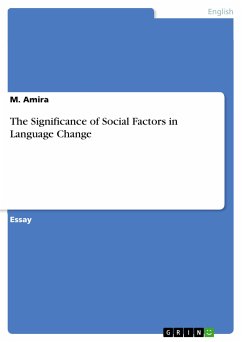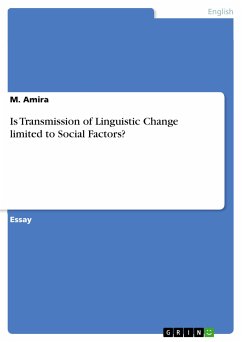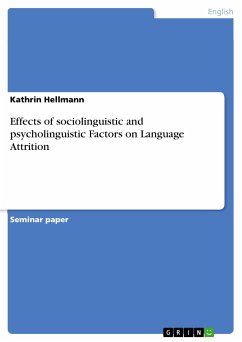Essay from the year 2021 in the subject English Language and Literature Studies - Linguistics, grade: 1,7, Trinity College Dublin (Centre for Language and Communication Studies), course: Sociolinguistics, language: English, abstract: While perspectives towards the phenomenon of language change are various and partly contradictory, they all coincide in the overall question of why and how language change takes place. In order to address this question, it is important to first, position the phenomenon of language change within the two major perspectives in linguistics, that is the distinction between linguistic change as diachronic or synchronic variation. Next, different models and theories that try to explain the origin of change and its underlying mechanism such as the family tree or wave model can be consulted in order to gain an insight into the complexity and interrelatedness of the different approaches. Especially the notion of internally and externally motivated change is here of special importance. In addition, these models prove to be foundational for the further discourse on how language change spreads and under which influences. Keeping this in mind, a closer look at the synchronic perspective of sociolinguistics provides relevant knowledge about the role of social factors in causing linguistic change which finally enables a testing of this perspective on the basis of the case examples of linguistic change in "Martha's Vineyard" (Blake & Josey, 2003) and "Ucieda" (Holmquist, 1985). In essence, this essay will examine the relationship between diachronic and synchronic approaches towards language change and demonstrate the significance of social factors on the basis of different theories and examples.
Dieser Download kann aus rechtlichen Gründen nur mit Rechnungsadresse in A, B, BG, CY, CZ, D, DK, EW, E, FIN, F, GR, HR, H, IRL, I, LT, L, LR, M, NL, PL, P, R, S, SLO, SK ausgeliefert werden.
Hinweis: Dieser Artikel kann nur an eine deutsche Lieferadresse ausgeliefert werden.









